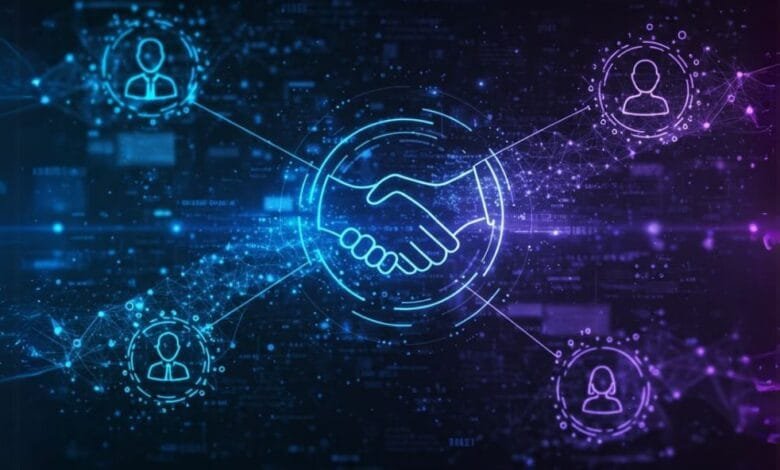Google’s A2A Protocol: How AI Agents Learn to Communicate

▼ Summary
– Google’s Agent2Agent (A2A) Protocol is a new open standard designed to enable seamless communication between AI agents, acting as a universal translator for diverse AI systems.
– A2A uses JSON-RPC over HTTP(S) for communication, allowing agents to share tasks, messages, and artifacts while maintaining security and privacy through built-in authentication.
– The protocol includes features like Agent Cards for capability discovery, structured Task requests, and support for streaming updates, enabling flexible collaboration between agents.
– A2A complements existing frameworks like LangGraph and CrewAI by providing a cross-platform communication layer, rather than replacing their internal orchestration logic.
– Over 50 tech companies support A2A, positioning it as a potential industry standard for AI agent interoperability, similar to how HTTP standardized web communication.
Imagine a team of AI assistants where each excels in a specific task, one crunches numbers, another crafts reports, and a third manages schedules. Individually, they’re brilliant, but getting them to collaborate is like herding cats. The problem? They don’t speak the same language.
This is where Google’s Agent2Agent (A2A) Protocol steps in. Launched in 2025, A2A acts as a universal translator for AI agents, enabling seamless communication across different platforms. Backed by a coalition of over 50 tech companies, including heavyweights like Salesforce, Atlassian, and Cohere, the protocol promises to break down silos and turn isolated AI tools into a cohesive team.
What Is A2A?
At its core, A2A is a standardized communication framework for AI agents. Think of it as the HTTP for artificial intelligence, a common language that lets diverse agents interact without custom integrations. Today, developers face a jungle of frameworks like LangGraph, CrewAI, and Microsoft’s Autogen, each with its own quirks. Without A2A, connecting agents built on different platforms requires tedious glue code.
A2A eliminates this friction. It allows an agent built in one framework to send tasks or queries to another, regardless of their underlying architecture. The protocol handles translation, ensuring messages are understood and actions are coordinated. Agents retain their autonomy while collaborating as peers—exchanging information securely without exposing proprietary internals.
How A2A Works: A Practical Example
Picture an office where AI agents handle different roles:
- Alice specializes in spreadsheets.
- Bob manages emails.
- Carol handles customer support.
Without A2A, Alice might output data in a format Bob can’t parse, leading to miscommunication. With A2A, the protocol acts as a real-time translator:
- Alice requests sales figures in her native “Excel-ese.”
- A2A converts the request into Carol’s preferred format.
- Carol retrieves the data and responds in plain English.
- A2A ensures Alice receives the response in a usable format.
The result? Smooth collaboration without manual intervention.
Key Components of A2A
- Agent Cards – Like digital business cards, these JSON profiles describe an agent’s capabilities (e.g., “CalendarBot v1.0: schedules meetings”).
- Skills – Defined tasks an agent can perform, such as `schedulemeeting` or `analyzedata`.
- Tasks & Artifacts – Structured requests and their deliverables (e.g., a calendar invite after scheduling).
- Messages – The actual content exchanged, which can include text, files, or structured data.
Security is baked in, with authentication and encryption ensuring only authorized agents share information.
A2A vs. Other Standards
- Anthropic’s MCP (Model Context Protocol) focuses on connecting AI agents to external tools (like APIs). A2A, in contrast, enables agent-to-agent collaboration—treating them as peers rather than tools.
- Existing frameworks (LangGraph, AutoGen) excel at orchestrating agents within their ecosystems. A2A bridges these frameworks, allowing cross-platform communication without requiring migration.
Getting Started with A2A
1. Install the SDK – Available for Python (`pip install a2a-sdk`). 2. Define Agent Skills & Cards – Outline what your agent can do. 3. Implement Logic – Connect your AI model or code to the A2A interface. 4. Deploy & Connect – Run agents as microservices and let them communicate via A2A.
The Future of AI Collaboration
A2A represents a leap toward interoperable AI ecosystems. By standardizing communication, it unlocks the potential for modular, specialized agents to work together seamlessly—whether booking trips, managing workflows, or analyzing data. With major industry backing, A2A could become the backbone of next-gen AI systems, much like HTTP did for the web.
For developers, this means fewer integration headaches. For businesses, it’s a gateway to smarter, more autonomous workflows. The era of AI teamwork is just beginning.
(Source: towards data science)
